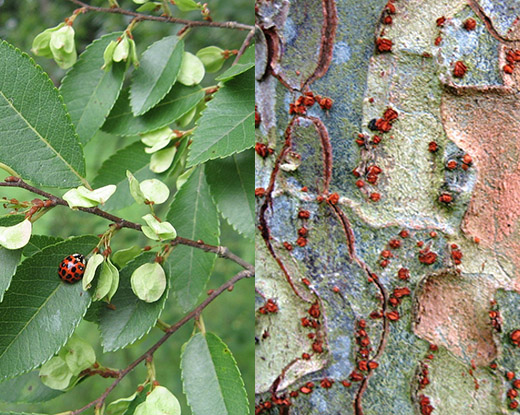The Southeast has an intense spring pollen season from January to April resulting from tree pollen counts that are often within the very high zone. In past years, the fall pollen season has been less intense, characterized by weed pollen, predominantly ragweed.
The study found that from 2009 through 2015 there were high levels of Chinese Elm tree pollen during the months of August and September. The pollen counts were consistently within the moderate range for trees, as determined by the local National Allergy Bureau criteria, greater than 15 grains per cubic meter. Peak counts of Chinese Elm ranged from 39 to 475 grains per cubic meter, notably with a greater number of days within the moderate pollen range and longer duration of the fall pollen season.
"Our study reveals that Chinese Elm is now an important autumn aeroallergen and should be considered in patients having predominant late summer-fall symptoms," says lead author Marissa R. Shams, MD, assistant professor of allergy/immunology, Emory University School of Medicine.
In the past, Chinese Elm has not been a local aeroallergen in Atlanta, as it is native to Asian continent. According to researchers, because of a variety of climatic, environmental and societal factors throughout the years, the prevalence of Chinese Elm pollen has increased.
"These findings show that the changes in increasing pollen count corresponded with changes in landscape practices and the increased use of Chinese Elm Trees in home gardening."
Chinese Elm trees are favored by landscapers and gardeners for their shade, low maintenance and beauty. They are also resistant to Dutch Elm disease and thrive in the urban and suburban Southeastern climate, as noted in the study.
According to Shams, if patients have predominant late summer-fall allergy symptoms or fail to respond to ragweed immunotherapy it may prompt further testing and modification of their current treatment regimens.
Additionally, she says this information illustrates that allergists need to remain aware of their local environment and changing trends in local pollen patterns.
The study was co-authored by Stan Fineman, MD, Atlanta Allergy & Asthma Clinics. Other supporters included Bodie Pennisi, PhD, University of Georgia; Laura Beverage, Greer Labs; and staff at the National Allergy Bureau pollen-counting station at Atlanta Allergy & Asthma Clinic, Kennestone.

